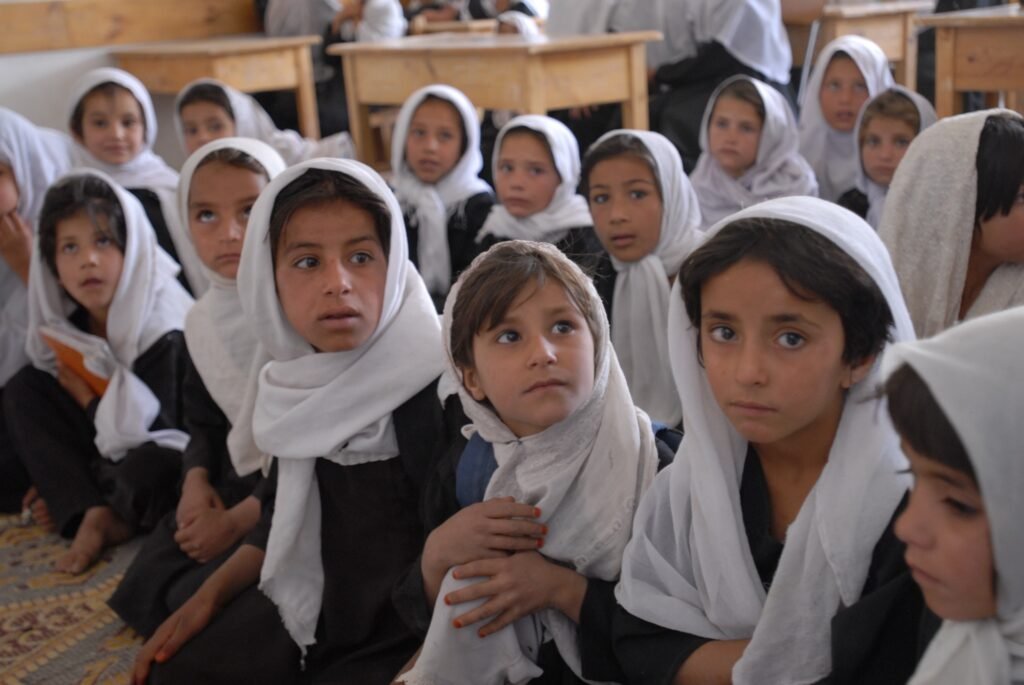|
Listen to article
Getting your Trinity Audio player ready...
|

“The philosophy of the school room in one generation will be the philosophy of government in the next” – Abraham Lincoln.
Women education in the times of rapidly advancing global technological environment with new technologies like artificial intelligence, big data analysis, robotics, drones etc. need to evolve and transform so as to adapt and prepare them with skills required for their career in future. Acquiring and acing STEMM (Science, Technology, Engineering, Mathematics, and Medicine) education is directly proportional to the socio-economic productivity and development of the nation. Achieving full potential of national competent-skilled workforce includes including and employing skilled women workforce of the nation.
Across the globe in war-torn countries, millions of women are deprived of health and education and their miseries and voices are embedded in the forgotten and neglected history of the nations. In the last three decades of conflict, war and militarization in Afghanistan by communist soviet troops, US-led forces, militant groups and Islamic Taliban, it is the women and girls who have lost and suffered the most.
Afghanistan has one of the highest maternal mortality rates (MMR) in the world where 638 women die per 100,000 live births. The maternal health is hugely undermined with limited accessibility and quality of maternal healthcare which has buildup a serious generational trauma. Educationally, Afghanistan comprising of 49% of women population has 90% of women (aged 25) deprived of education. The Afghan women are disadvantaged and backward STEMM educationally. This educational-exclusion, deprivation and marginalization is due to number of factors like decades of wars and conflicts, political instability, myopic ideologies, cultural and religious restrictions to traditional education, lack of accessible girl’s school, female faculties, hostels, roads and transport facilities etc. which has sadly affected the education and exploration of the world of science and technology. National Action Plan for the Women of Afghanistan (NAPWA), a 10 years strategic framework (2010-18) had a significant impact on developments regarding women education and their participation in public life. Such more sustained efforts are needed to recognize the need for diversity and inclusion by constituting Gender Inclusion Fund for Afghanistan to improve access to education for women and transgender students. Tailored and targeted efforts for Afghan girls by understanding the cultural and gender linkages to encourage and retain vulnerable women in STEMM are required. Co-educational programs for men and women will help to understand the fallacies of myopic traditions which have unintentionally or intentionally damaged the status and wellness of women in Afghanistan can bring radical revolution.
When the world is trying to catalyze transformative justice to remake a safe and peaceful Afghanistan 2.0, a global solidarity with shared responsibility for safeguarding women’s right to access quality health and education must be at the forefront. Being complacent on Afghan women and children issues and leaving it on neocolonial derived patriarchy and militant fear tactics is not responsible for strategic or diplomatic talk. Biden claiming “zero responsibility” for the future of Afghan women and girls if they were negatively affected after a U.S. withdrawal is “zero wisdom” dismal strategy. The course correction should include leaving a positive legacy affirming the environment and ecosystems for future education in Afghanistan. After 20 years of military engagement and many promises made, the U.S. Administration should hold some consciousness and responsibility for at least basic human rights to access quality education.
If India is engaging with those Taliban leaders who are willing to reconcile, believe in the reintegration process and have faith in the Afghan constitutional democratic framework of Afghanistan- protecting and promoting girl’s education should be at the center of peace establishment efforts. If Taliban keep denying access to good quality education to all children, specifically girls, they effectively are guaranteeing Afghans a future of poverty, chronic diseased underdeveloped and unsustainable economy. As the global responsibility of each nation is to preserve international peace and security, it is the responsibility of the world to listen to the neglected and secluded voices of Afghan girls and women. It’s a global socio-economic-political fault line and building systems for STEMM education and maternal healthcare systems is an essential agenda to be included in the ongoing peace process to provide true transformative justice to Afghan women and for the development of Afghanistan’s social institutions.
With global assistance Afghanistan government can launch a more prolific and sustainable Gender Equality and Women’s Empowerment strategy to:
- Establish centers/mechanisms for integration of STEMM education in primary and secondary education of Afghan children.
- Develop frameworks, policies and crowdfunding platforms for sustained efforts to integrate gender equality across the national programs, governance and administrative systems.
- Enable, train and support local Afghan communities and organizations to understand and take responsibility to mainstream gender equity and empowerment.
- Building capacity, designing and implementing gender sensitive and responsive programs to establish systems for development and sustenance of Afghan women in the workplaces.
India in this collaborative strategy for inclusion of girls in science technology can aim to-
- Establish science colleges as friendly gesture
- Free visa facility for Afghan women
- Indo-Afghan women’s scholarships for promoting research and education
- Support international initiatives and develop new collaborative health initiatives on women health in Afghanistan.
- Establish scientific labs and projects for joint scientific ventures and promote women scientists in Afghanistan.
- Development of women leadership alliance network for promotion of women initiatives in the west.
These efforts will play an important role in determining Afghanistan’s holistic socio-education-health-economic productivity and innovation system.
Gender-oriented issues and their solutions can only bridge inequalities in war and conflict-affected countries, societies to transform them into healthy and peaceful societies of human dignity. The formal and informal patriarchal structures need to be neutralized for equality and dignified existence of every woman as every Afghan citizen. Voices of Afghan Women must be heard and considered at all the tables engaged in the Peace Process. For Afghan girls STEMM education is essential to make them competent for advancing technical job opportunities, growth and development. The base of inclusion of women in global and national STEMM sectors lies in promotion of education and skills to girls of Afghanistan, who are vulnerable, unheard, and at a higher risk of being left out in the available global and national scholarships and start-up schemes etc. A social trans-formative experiment in Afghanistan is needed to nurture young scientific minds; to make girls stand on their own, reaching out and exploring opportunities at home and across the globe.
United efforts by the international community to restore their human dignity, access to health and education and freedom of expression by means of negotiation, mediation, arbitration or judicial decisions. In remaking Afghanistan 2.0 education innovation for peace and sustainable development in Afghanistan is the way forward.






You are absolutely right, in fact, the whole international community should come together in good conscience and lead this bewildered nation in direction of sustainable development.